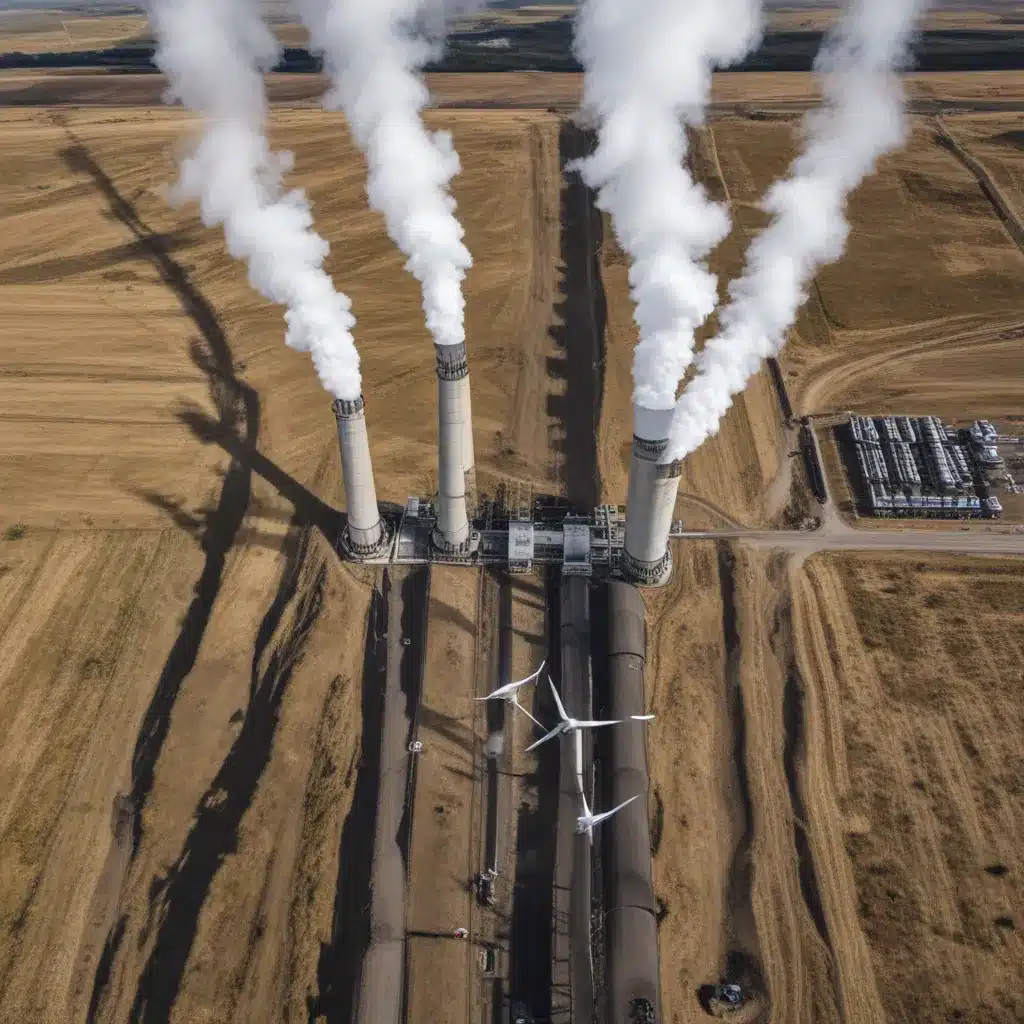
Europe’s transition to clean energy is gaining momentum, with remarkable advancements in wind, solar, and hydrogen technologies. As the continent pushes towards ambitious net-zero goals, innovative solutions that integrate renewable energy with carbon capture, utilization, and storage (CCUS) are emerging as a crucial strategy to close the loop on emissions.
Innovations in Solar Power
The solar sector has seen a flurry of breakthroughs in recent years. Perovskite-based solar cells, for instance, have achieved record-breaking power conversion efficiencies of over 25%, rivaling the performance of traditional silicon-based panels. These next-generation materials offer the potential for lower manufacturing costs and increased flexibility in solar form factors. Meanwhile, floating solar installations are gaining traction, with projects spanning artificial lakes, reservoirs, and even offshore platforms, maximizing the utilization of available surface area.
Progress in Wind Energy
The wind power industry continues to scale new heights, both on land and at sea. Offshore wind farms are pushing the boundaries of turbine size and power output, with the latest models exceeding 15 megawatts (MW) in individual capacity. Advancements in blade design, grid integration, and installation techniques have steadily driven down the levelized cost of energy (LCOE) from offshore wind. Onshore, the growth of repowering initiatives—replacing older turbines with more efficient models—has breathed new life into established wind farms across Europe.
Developments in Geothermal Technology
While less prominent in the renewable energy landscape, geothermal power is also witnessing important breakthroughs. Enhanced geothermal systems (EGS) utilize advanced drilling and stimulation techniques to access deeper, higher-temperature reservoirs, expanding the geographic reach of this reliable, baseload-capable resource. Hybrid geothermal-solar and geothermal-storage projects are also emerging, leveraging the synergies between these complementary technologies.
Carbon Sequestration Methods
Alongside these renewable energy advancements, the field of carbon capture, utilization, and storage (CCUS) is also gaining traction. Direct air capture (DAC) technologies, which extract CO2 directly from the atmosphere, have seen significant progress. Pioneering projects, such as the Orca plant in Iceland, are demonstrating the feasibility of this approach, with the captured CO2 being permanently stored underground or utilized in industrial processes.
Utilization of Captured Carbon
Beyond sequestration, the utilization of captured CO2 is also creating new opportunities. Researchers are exploring ways to convert CO2 into valuable products, such as synthetic fuels, building materials, and even feedstock for the chemical industry. A project at Swinburne University of Technology in Australia, for example, is investigating the use of solar-powered photocatalysts to convert CO2 into green methane, carbon monoxide, and methanol—effectively closing the carbon loop.
Emerging Carbon Capture Technologies
Innovations in CCUS are not limited to DAC. Point-source capture from industrial facilities, such as cement plants and power stations, is also advancing. Novel bimetallic catalysts are being developed that can convert methane into hydrogen while producing high-quality solid carbon co-products, minimizing CO2 emissions. Breakthroughs in membrane technologies and cryogenic separation are also improving the efficiency and cost-effectiveness of carbon capture processes.
Synergies between Renewable Energy and Carbon Capture
The integration of renewable energy and CCUS presents synergistic opportunities to enhance the overall emissions reduction cycle. By coupling solar, wind, or geothermal power with carbon capture, the captured CO2 can be used to produce carbon-neutral or carbon-negative fuels, closing the loop on the energy system. This approach not only reduces atmospheric CO2 levels but also provides a path for the continued use of liquid fuels in hard-to-abate sectors, such as aviation and heavy transportation.
Optimization of the Emissions Reduction Cycle
Maximizing the efficiency and scalability of this integrated approach requires overcoming several challenges. Improving the energy efficiency of carbon capture processes, developing cost-effective storage solutions, and addressing the technical and logistical complexities of large-scale projects are crucial steps. Pilot and demonstration initiatives, such as those funded by the European Union’s Horizon Europe program, are paving the way for the real-world implementation of these innovative technologies.
Challenges and Barriers to Closing the Loop
The path to widespread adoption of renewable energy and CCUS solutions is not without obstacles. Policy frameworks, regulatory environments, and public acceptance all play a crucial role. Establishing carbon pricing mechanisms, investment incentives, and robust monitoring and verification protocols are essential to drive the necessary scale and pace of deployment. Engaging the public through education and awareness campaigns can also help build trust and support for these transformative technologies.
The Role of Policy and Regulations
Policymakers across Europe are responding to the urgency of climate action by enacting ambitious frameworks to accelerate the energy transition. The European Union’s Green Deal and Fit for 55 package set clear targets for renewable energy deployment, emissions reductions, and the development of CCUS infrastructure. National governments are also introducing complementary policies, such as renewable energy auctions, carbon capture tax credits, and public-private partnerships, to catalyze private-sector investment and innovation.
Economic Considerations and Incentives
The economic viability of renewable energy and CCUS solutions is crucial for their widespread adoption. Technological advancements are steadily driving down the LCOE of wind and solar power, while the strategic use of Power Purchase Agreements (PPAs) is providing stability and predictability for renewable energy investors. In the CCUS domain, innovative business models, carbon offset programs, and revenue streams from the utilization of captured CO2 are improving the overall economic proposition.
Public Engagement and Awareness
Engaging the public is essential for the successful deployment of these transformative technologies. Fostering open dialogues, addressing concerns, and highlighting the environmental and economic benefits can cultivate broader support and acceptance. Educational initiatives, community outreach, and strategic communication campaigns can help bridge the gap between the technical complexities and the everyday impact on citizens’ lives.
As Europe continues its renewable energy revolution, the integration of these cutting-edge technologies with carbon capture, utilization, and storage offers a promising pathway to achieve a sustainable, net-zero future. By closing the loop on emissions, the continent can unlock a new era of clean energy, enhanced resource efficiency, and a healthier, more resilient environment for generations to come.







